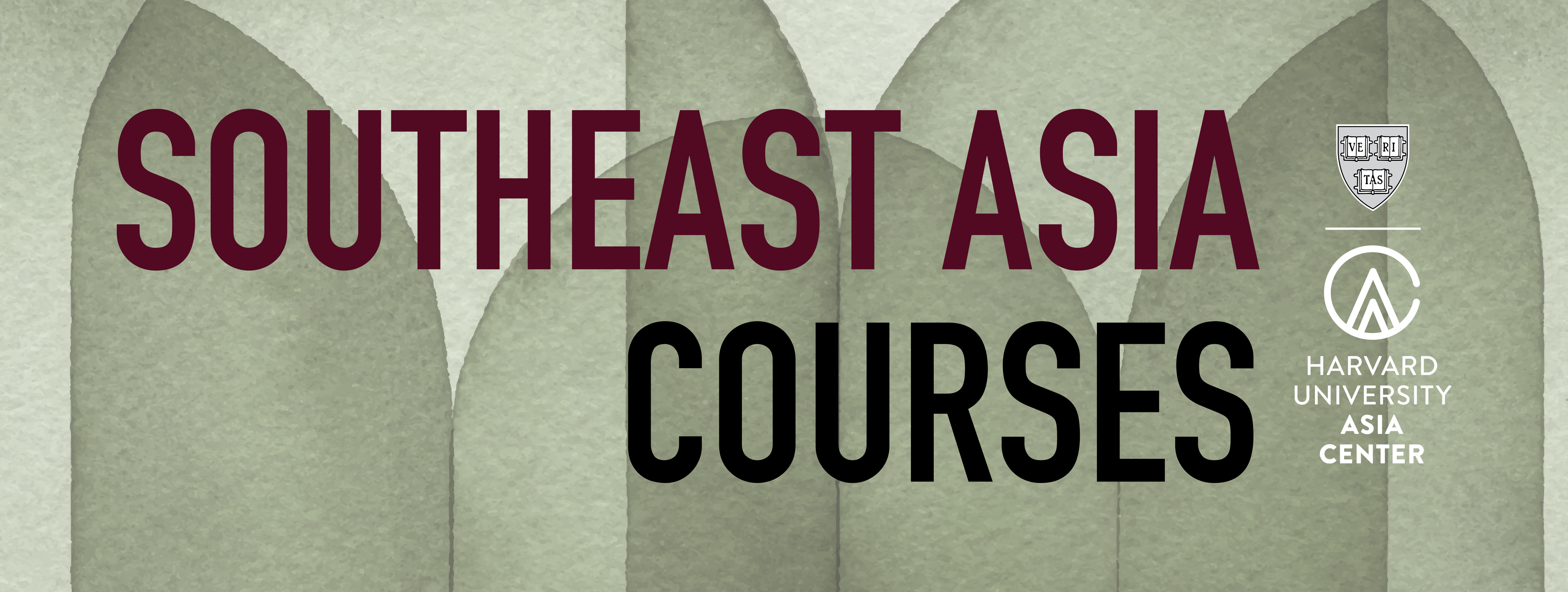Southeast Asia Courses 2024-2025

COMPLIT 171
Counter-Imperialism and Asian-African Literatures
Annette Lienau
Fall 2024
FAS
The first Asia-Africa conference of newly independent states (held in Indonesia in 1955) was hailed by contemporary observers as an event as significant as the European renaissance in global importance. It inspired a sequence of political and cultural initiatives in pursuit of new forms of cultural exchange unmediated by former colonial centers. This course explores the historic tensions of this transition towards a post-colonial global order across two continents. The course raises the following questions: how did anti-colonial African and Asian authors and political figures consider the fields of culture and literature as an extension of their political engagements? How were literature and culture viewed as advancing forms of revolutionary change, or addressing entrenched social grievances? How did writers reconcile the ambiguities of national independence with the risks of neo-colonial or ethno-nationalist exploitations? The course will introduce you to a diversity of authors to explore these questions, engaging with counter-imperial and revolutionary writing from African and Caribbean contexts, the Middle East, and Southeast Asia (including Richard Wright, Franz Fanon, Césaire, Senghor, Naguib Mahfouz, and Chairil Anwar).
HDS 3176
What is Lived Islam?
Teren Sevea
Fall 2024
HDS
What are the academic approaches to studying Islam? How do our academic approaches help us engage the question: what is Islam? This course begins by considering how 'Islam' is an object of academic inquiry but remains primarily concerned with the most prominent elements of Islam and being Islamic that have been marginalized within Islamic studies. It acknowledges the methodological difficulties involved in pursuing research on the phenomenon and practice of Islam across social contexts of the past and the present, while discussing possible methods of studying Islam as the religion lived by Muslims and even non-Muslims. Students will be introduced to academic and religious sources that encourage us to (re)approach Islam as the everyday experience of believers, the multiverse of rituals and exercises of knowledge acquisition, as well as contests over moral authority. Students will, moreover, be encouraged to consider if a focus on lived Islam encourages us to discard regnant dichotomies of 'textual' and 'popular' religion, along with imagined divisions of the Islamic world into a center and peripheries. Jointly offered in the Faculty of Arts and Sciences as Religion 1807.
IGA 291
The War in Vietnam
Fredrick Logevall
Fall 2024
HKS
This course covers the long struggle for Vietnam, waged between 1940 and 1975, with particular attention to the long period of direct American involvement. The events will be considered in their relationship to Vietnam's history, to U.S. politics and society, and to the concurrent Cold War. The class structure will combine lecture, question-and-answer, and section discussion, and we’ll also view occasional film clips (and one full film) in class.
FYSEMR 72P
Corporate Power & Human Rights—Community Resistance and Social Movements
Tyler Giannini
Fall 2024
HLS
How do the seemingly most marginalized take on the most powerful corporations in the world and win? In this seminar, we will delve into this question and what drives community resistance and social movements in the face of frequently daunting odds. We will zero in on community resistance in its many forms when confronting abusive corporations and authoritarian governments often supporting them. Through case studies involving natural gas in Myanmar, gold mining in Papua New Guinea, and chocolate in West Africa, we will discuss both the harms communities experience and how communities can have a seat at the table to demand their rights and take on oppressive systems. We will also look at how North America is implicated in these cases and consider the power dynamics between communities, advocates, businesses, and states that span borders and different cultures. We will also look at ways that communities can build their own power through the solidarity economy and how advocates cannot only combat economic injustice but build their visions of economic justice for the future.
COMPLIT 100
Contemporary Southeast Asia through Literature and Film
Annette Lienau
Spring 2025
FAS
This course will explore contemporary literature and cinema across Southeast Asia, focusing on regional developments after the Asian financial crisis of 1997 through the present. Themes discussed include literature’s relationship to economic turmoil and political change; questions of class and social mobility; anti-authoritarian writing and issues of censorship; literature, youth culture, and new media landscapes; and literary explorations of gender and sexuality. Readings will include a selection of critical essays to foreground these central themes of the course, along with poetry, short fiction, and films from: Brunei, Cambodia, Laos, Indonesia, Malaysia, Myanmar, the Philippines, Singapore, Thailand, Timor-Leste, and Vietnam. Readings will be taught in English translation and films will be screened with English subtitles.
HIST 1037
Modern Southeast Asia
Sugata Bose
Spring 2025
FAS
A lecture survey of the modern history of Burma (Myanmar), Thailand, Malaysia, Singapore, Indonesia, Vietnam, Cambodia, Laos and the Philippines from 1800 to the present comparing the experience and aftermath of British, French, Dutch, Spanish and US imperialism in the region.
HIST 1911
Pacific History
David Armitage
Spring 2025
FAS
The Pacific Ocean covers a third of the Earth's surface and one-third of humanity lives on its shores and islands, from Russia to New Zealand and from Southeast Asia to South America. This seminar introduces students to oceanic and global history via works in Pacific history by scholars of the Pacific Islands, Asia, Australasia, Europe, and the Americas. Themes covered include cultural encounters, exploration, migration, history of science, geopolitics, and economic history.
....................................................................................................................................................................................................
Please consider subscribing to the Southeast Asia Spotlight, the Asia Center's weekly mailing of Southeast Asia events and resources.



